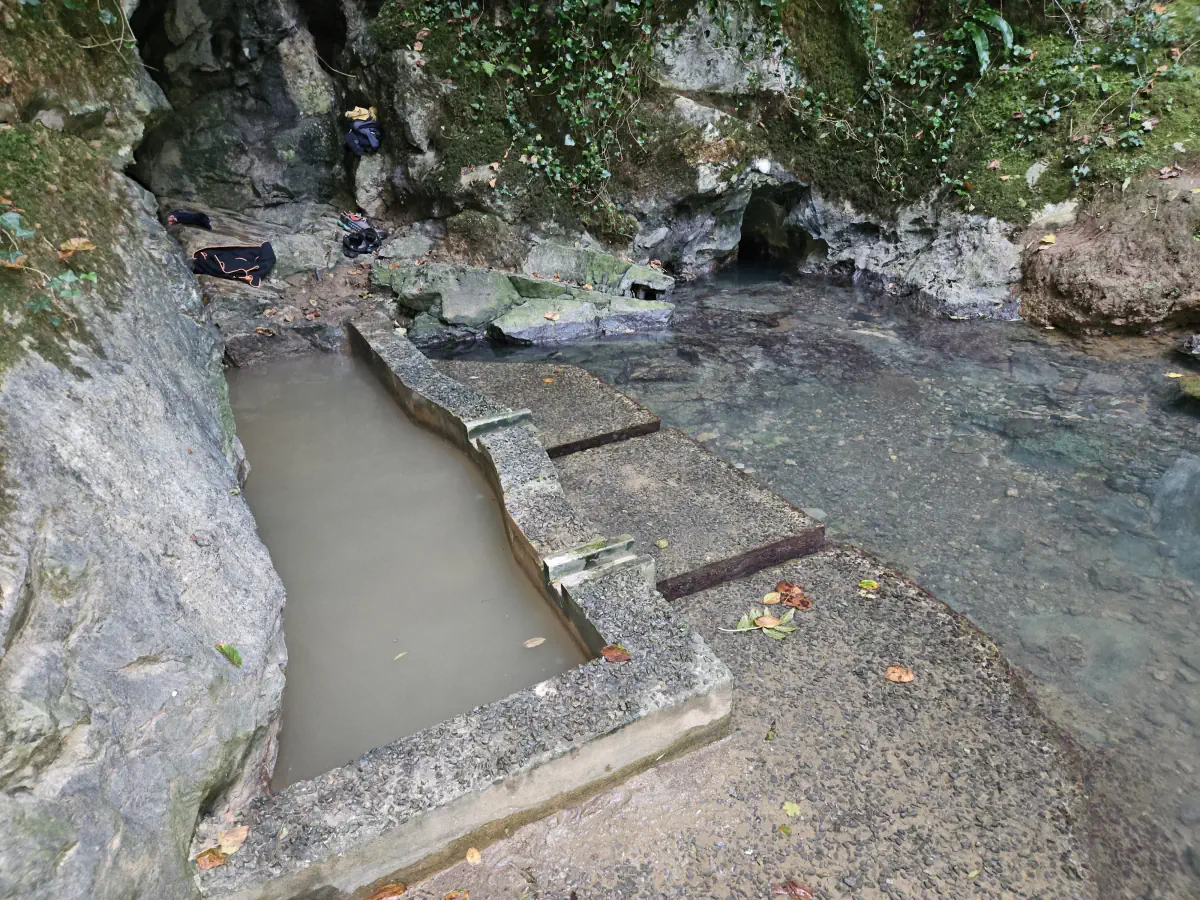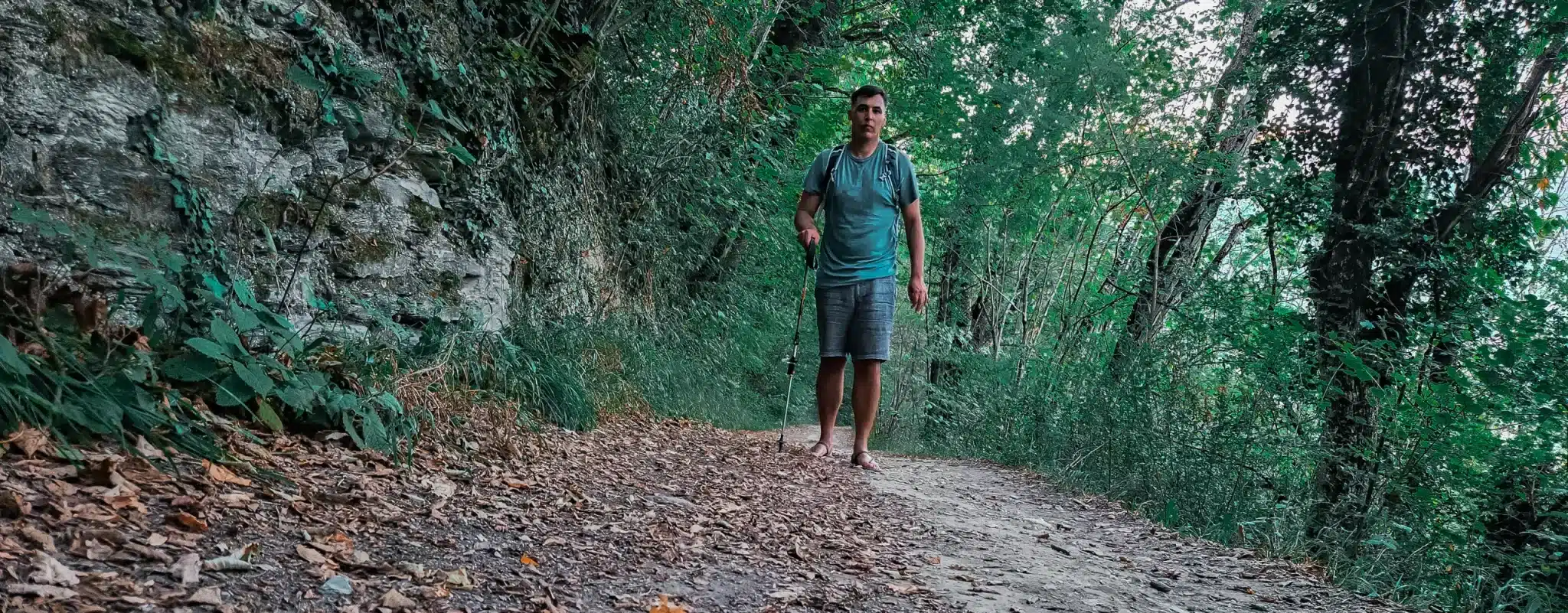Visit the Camou-Cihigue hot spring, French Pyrenees
- Nature Source Chaude
- Published on
- Updated on 25 May 2025
The peaceful village of Camou-Cihigue, located in the Pyrénées-Atlantiques department, is home to two springs situated close to one another.
The most interesting is the hot spring, where water gushes out of a small cave. This hot water mixes with cold mineral water containing calcium, magnesium and bicarbonate. The cold water emerges from a crevice in the rock next to the hot spring, reaching temperatures of around 20°C. Together, they form a rivelet that makes the area particularly pleasant, especially on hot summer days.
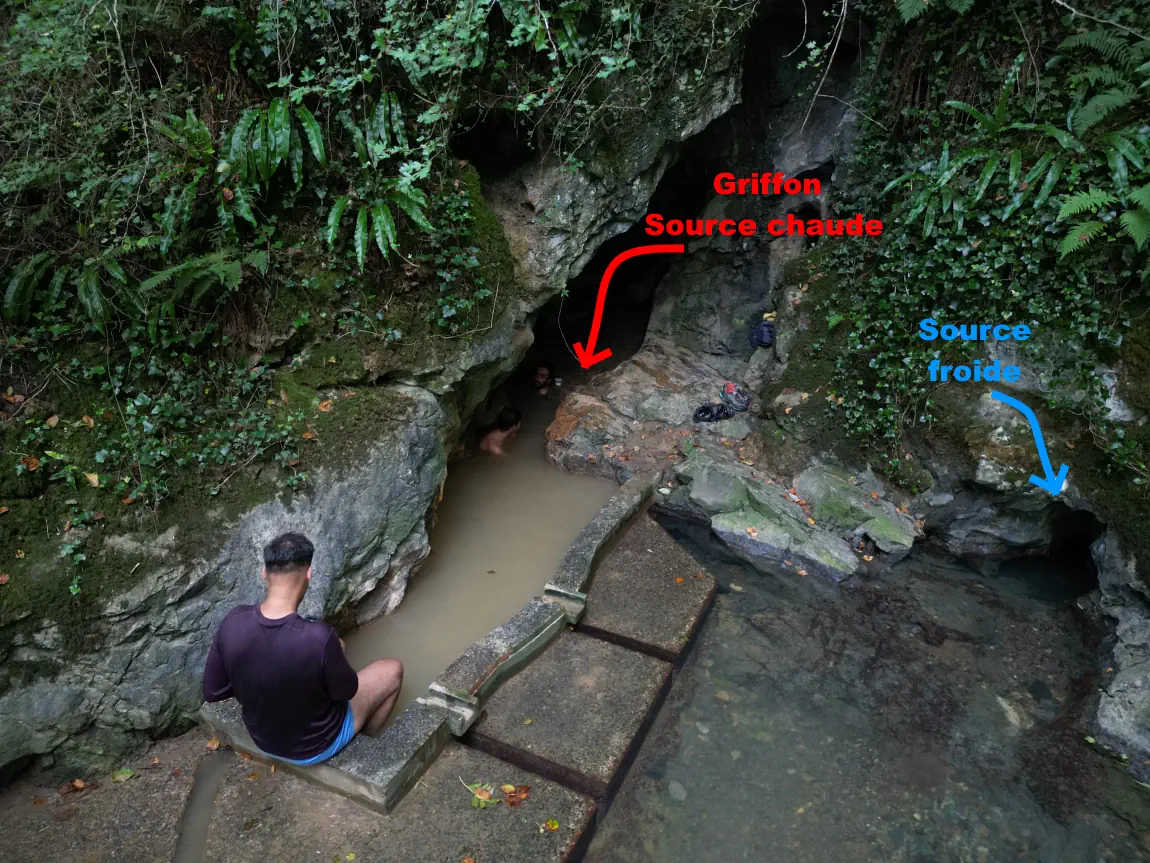
Table of Contents
A preserved and accessible site
The Lamina Ziloa thermal spring, also known as the hole of the Laminaks, is located to the left of the Aguerria bar and restaurant. Parking is available opposite the restaurant or next to the church or town hall. An educational sign marks the start of the trail. Simply follow the signposted path for around 350 metres. The site has been landscaped, and entry to the hot spring is free of charge.
Owner of the spring: the Aguer family, committed to preserving the local heritage (and its springs).
Notes: All the land between the spring and the Aguerria restaurant/bar (formerly a spa establishment) belongs to Mr Aguer. You will therefore be crossing private property where there are livestock.
How can you help to respect this area, which is open to visitors free of charge?
– Dogs are not allowed (instructions from the owner).
– Once you have passed the farm, take the path on the right after the Canadian gate, which leads down to the stream. Follow the stream as far as the springs.
– Please respect the area and take your rubbish with you. Smoking is prohibited.
The site
At the beginning of the 20th century, thermalism was booming. Recognising its potential, the Aguer family, who owned the spring, undertook the necessary development work to exploit it.
To prevent the cold mineral spring from lowering the temperature of the hot water and reducing its therapeutic value by mixing with it, Mr Aguer Pierre constructed a low concrete wall. A staircase was then added to make accessing the pool easier. The hot water was channelled to the Eiheski house, of which only the Aguerria restaurant remains today. Part of the house was converted into a spa. This water was artificially heated and used to supply four baths and a shower. Nowadays, visitors can soak in the spring water directly.
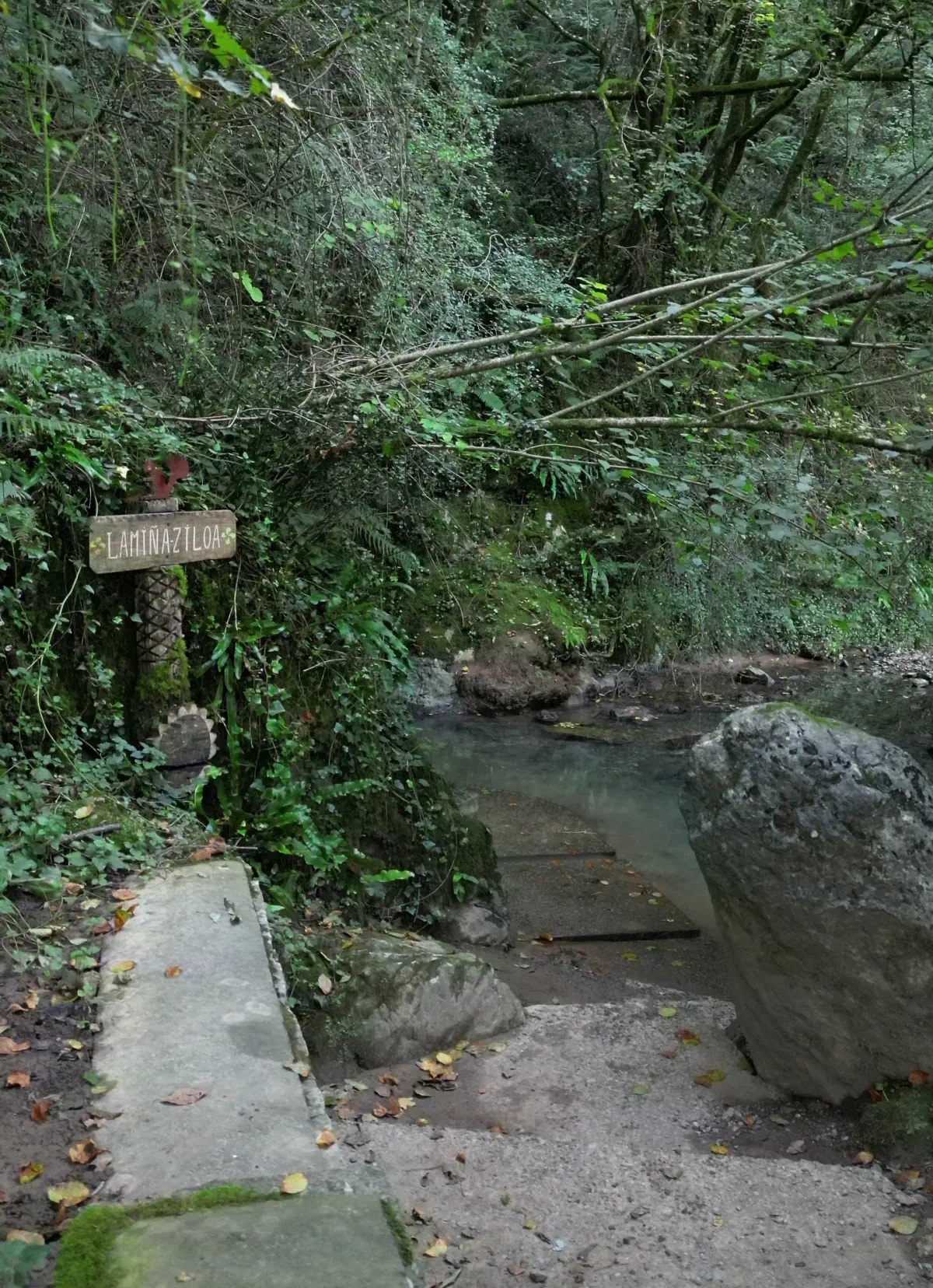
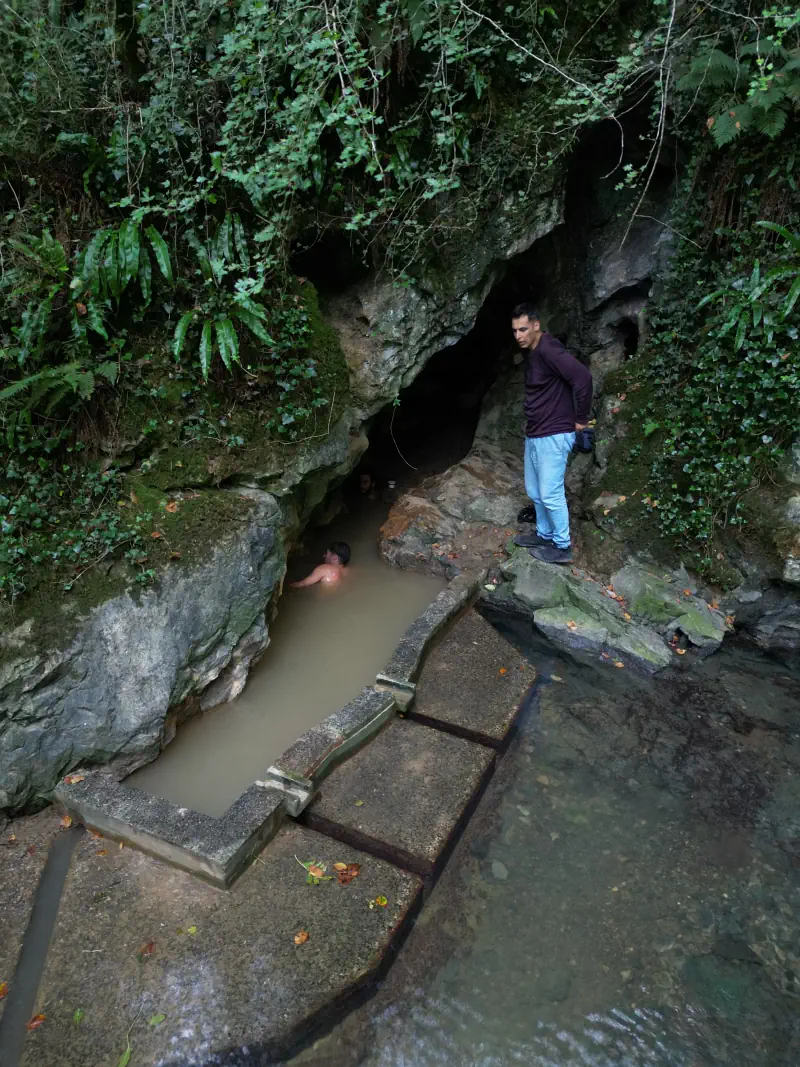
Although the hot spring is only a five-minute walk away, the location feels completely secluded. It is located at the end of a lush green valley.
The contrast between the clear blue of the cold spring and the hot, muddy water — a rejuvenating blend of water and earth — against a backdrop of lush greenery and dark rocks creates a sumptuous colour palette. Although the hot spring is only a five-minute walk away, the location feels completely secluded. It is located at the end of a lush green valley.
Furthermore, this hot water naturally gushes out of a crack in the stone just below the cave at the bottom of the pool. The spring has been designed so that both locals and visitors can continue to enjoy it.
The nature of water and its therapeutic properties
The water from this source is of the chloride-sodic, sulphated, bromided and slightly radioactive type.
The water is very salty (19 g per litre compared to 35 g per litre in the sea). This pool offers a unique and disconcerting experience: you really do float effortlessly thanks to your body’s natural buoyancy, which is beneficial for the body. To find out more, please read our article entitled ‘The amazing health benefits of a hot bath‘.
According to reports in the press at the time, these waters were said to provide relief from rheumatism, gynaecological ailments, and stunted growth in children. The small spa establishment mainly welcomed patients from the Béarn and Soule regions.
